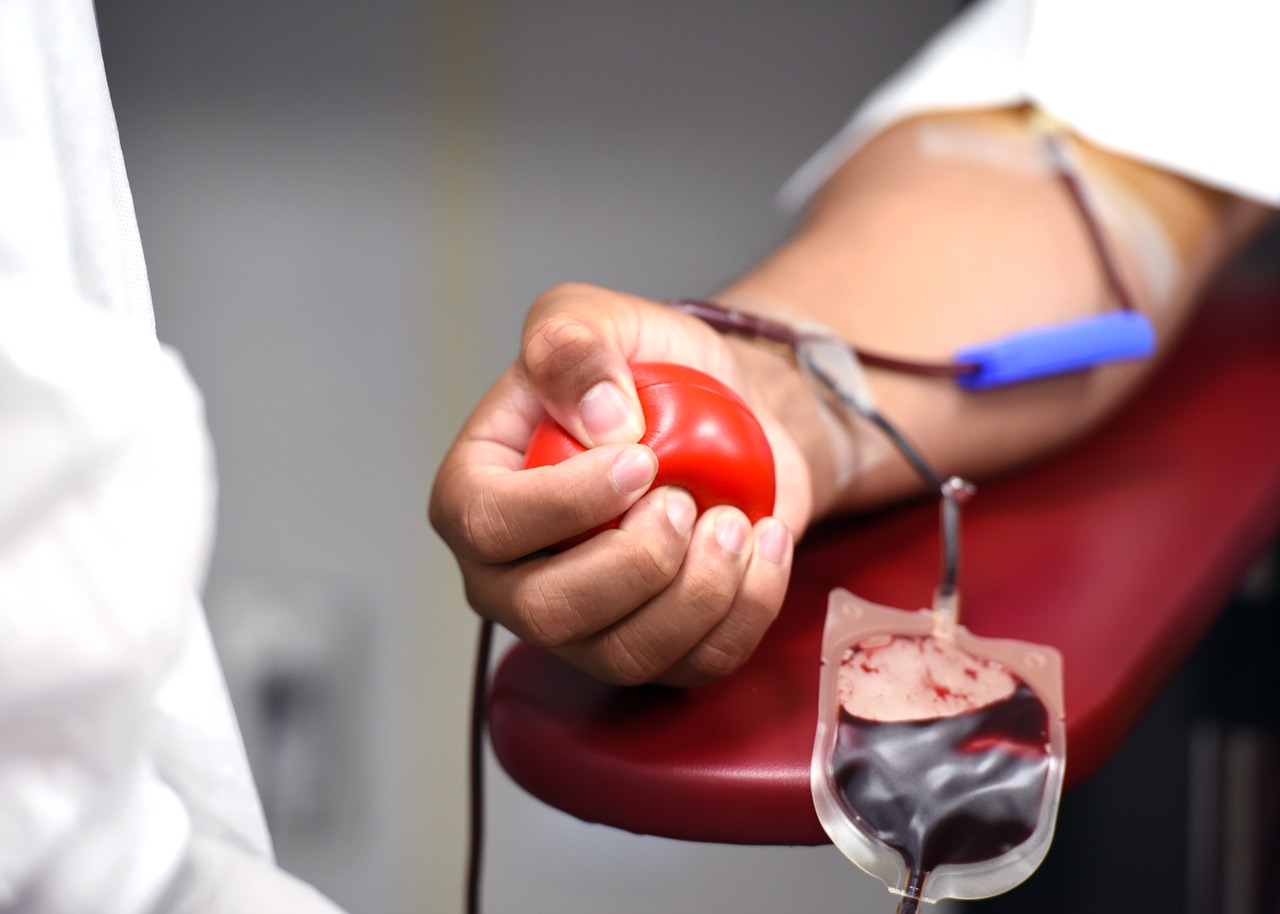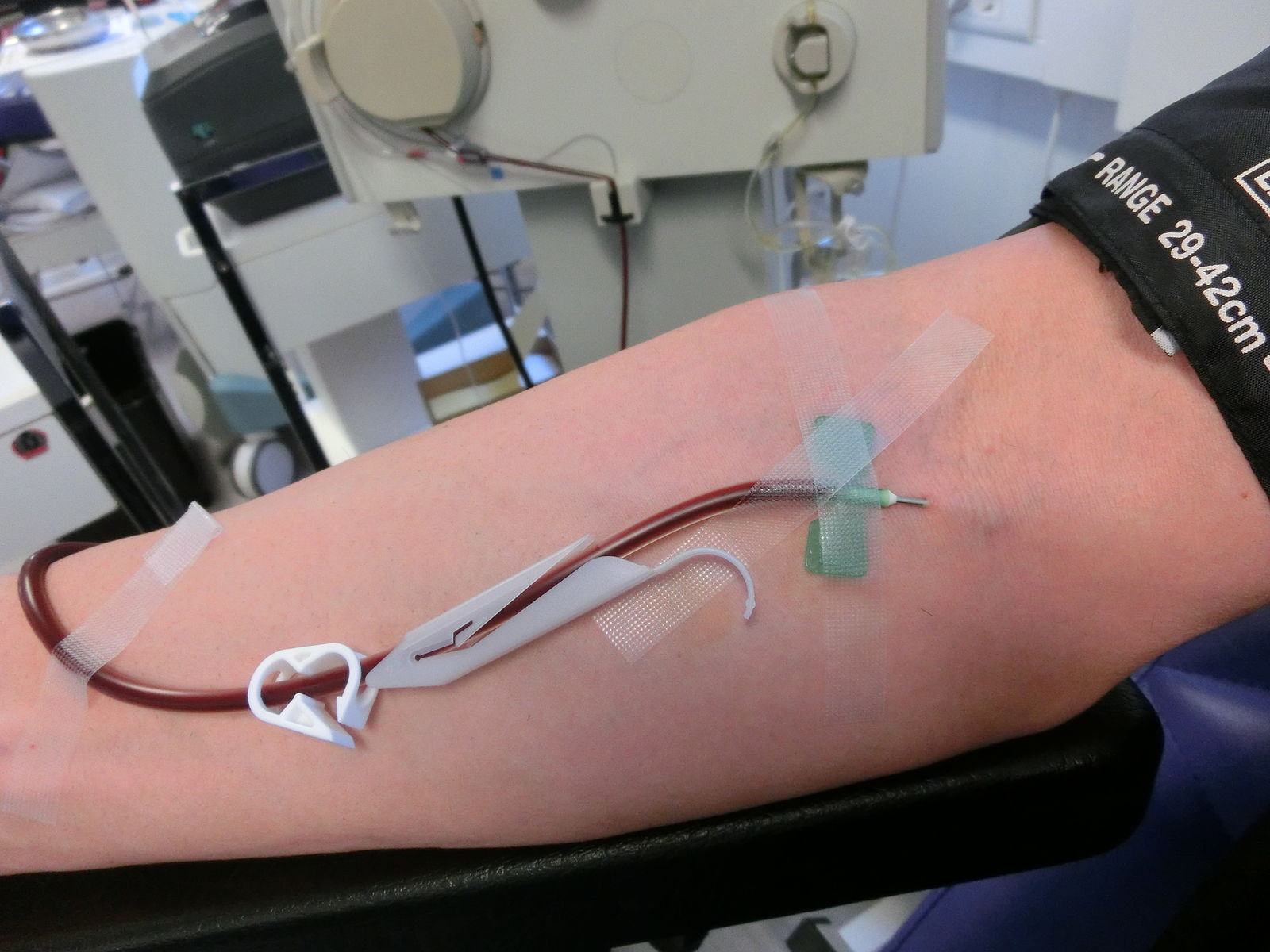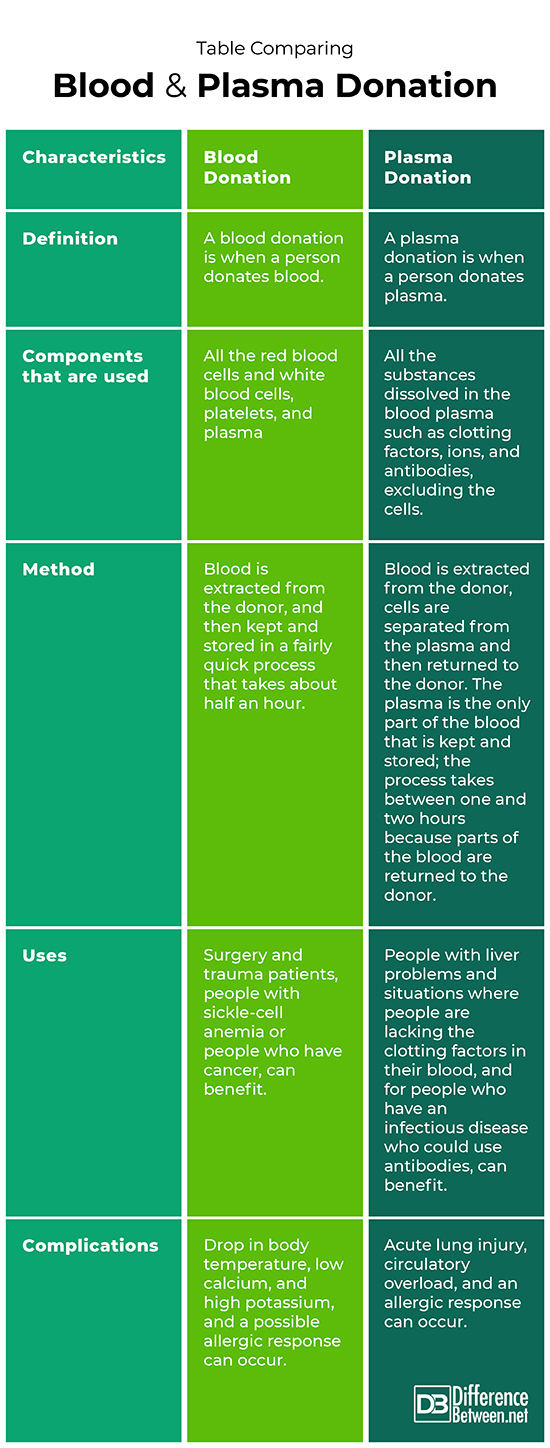Difference Between Blood and Plasma Donation
A blood donation is when a person donates about one pint of blood. Plasma donation is when the plasma component of blood is extracted from the patient.

What is Blood Donation?
Definition:
Blood donation is the process in which a person has blood removed from a vein for later use, either by somebody else, or for use by the person donating the blood.
Purpose:
People often need blood transfusions when they have surgery or have suffered blood loss due to some type of injury or trauma. People who have conditions such as sickle-cell disease (where blood cells are incorrectly shaped), or anemia (where people lack hemoglobin or red blood cells for whatever reason), sometimes need blood transfusions, as do cancer patients.
Method:
A technologist called a phlebotomist first uses alcohol to sterilize a part of the arm, then places a needle into an arm vein. Approximately 1 pint of blood is removed, and after the process is completed the needle is removed and pressure placed on the insertion point. People often drink some orange juice afterwards, which helps them feel better and prevents fainting. The entire process is quick, taking less than thirty minutes.
Complications:
Where most of a patient’s blood volume is replaced, there can be complications such as clotting. There can be low calcium and high potassium in some cases, and body temperature may drop, particularly with large transfusions because blood is stored at low temperatures of 4OC.

What is Plasma Donation?
Definition:
A plasma donation is when a person donates blood plasma that can be used by patients in need.
Purpose:
Blood plasma is commonly given to patients who have suffered burn injuries or have a lack of clotting factors in the blood. Sometimes patients with liver disease need blood plasma as well since a diseased liver may not make enough clotting factors.
Method:
A plasma donation takes longer than a simple blood donation, taking anywhere between one to two hours to complete. The blood is removed from the patient but unlike a regular blood donation, the blood passes through a cell separating machine that separates the plasma out from the rest of the blood. The cells and platelets are returned to the donor and the plasma is retained and stored for later use.
Complications:
There can be some adverse events associated with transfusion of plasma, including lung injury and circulatory overload as well as allergic reactions. Similar to blood transfusions, bad reactions are most likely when a person receives a large plasma transfusion.
Difference between Blood and Plasma donation?
Definition
A blood donation is the process in which blood is donated by a person. A plasma donation is the process in which a person donates plasma.
Components that are used
In the case of a blood donation, all the red blood cells and white blood cells, platelets, and plasma are donated and used for some person undergoing medical treatment. In the case of a plasma donation, only the plasma is used and not any of the red blood cells or other cells in the blood.
Method
For a blood donation, the blood is extracted from the donor, kept and stored in a process that takes about half an hour. For a plasma donation, blood is extracted from the donor, cells are separated from the plasma and returned to the donor while the plasma is kept and stored; the process takes between one and two hours.
Uses
Blood donation is useful because people who have surgery or have undergone trauma with blood loss often need to be given blood, as do patients who have cancer or sickle-cell anemia. Plasma donation helps people who lack clotting factors; plasma contains the factors needed by people with blood disorders or who are in liver failure.
Complications
Possible complications associated with people receiving a blood donation are as follows: a drop in body temperature, low calcium levels, and high potassium levels, and having a possible allergic response. Potential complications associated with people receiving a plasma donation include developing acute lung injury, circulatory overload, and having an allergic response.
Table comparing Blood and Plasma donation

Summary of Blood Vs. Plasma Donation
- Blood donation is donation of all the blood products, including the blood cells and plasma.
- Plasma donation is where the focus is the plasma of the blood being donated, and so the cells are returned to the donor.
- Both blood and plasma donation are used in health care to help individuals who need a blood or plasma transfusion.
- Difference Between Rumination and Regurgitation - June 13, 2024
- Difference Between Pyelectasis and Hydronephrosis - June 4, 2024
- Difference Between Cellulitis and Erysipelas - June 1, 2024
Search DifferenceBetween.net :
Leave a Response
References :
[0]Maxwell, Melanie J., and Matthew JA Wilson. "Complications of blood transfusion." Continuing Education in Anaesthesia, Critical Care & Pain 6.6 (2006): 225-229.
[1]Pandey, Suchitra, and Girish N. Vyas. "Adverse effects of plasma transfusion." Transfusion 52 (2012): 65S-79S.
[2]Sarode, Ravinda. “Special Blood Donation and Transfusion Procedures.” Merckmanuals. Merck & Co., 2020, https://www.merckmanuals.com/home/blood-disorders/blood-transfusion/special-blood-donation-and-transfusion-procedures
[3]Image credit: https://pixabay.com/photos/blood-blood-donation-medical-donor-5427229/
[4]Image credit: https://commons.wikimedia.org/wiki/File:Blood_plasma_donation_3653.JPG
